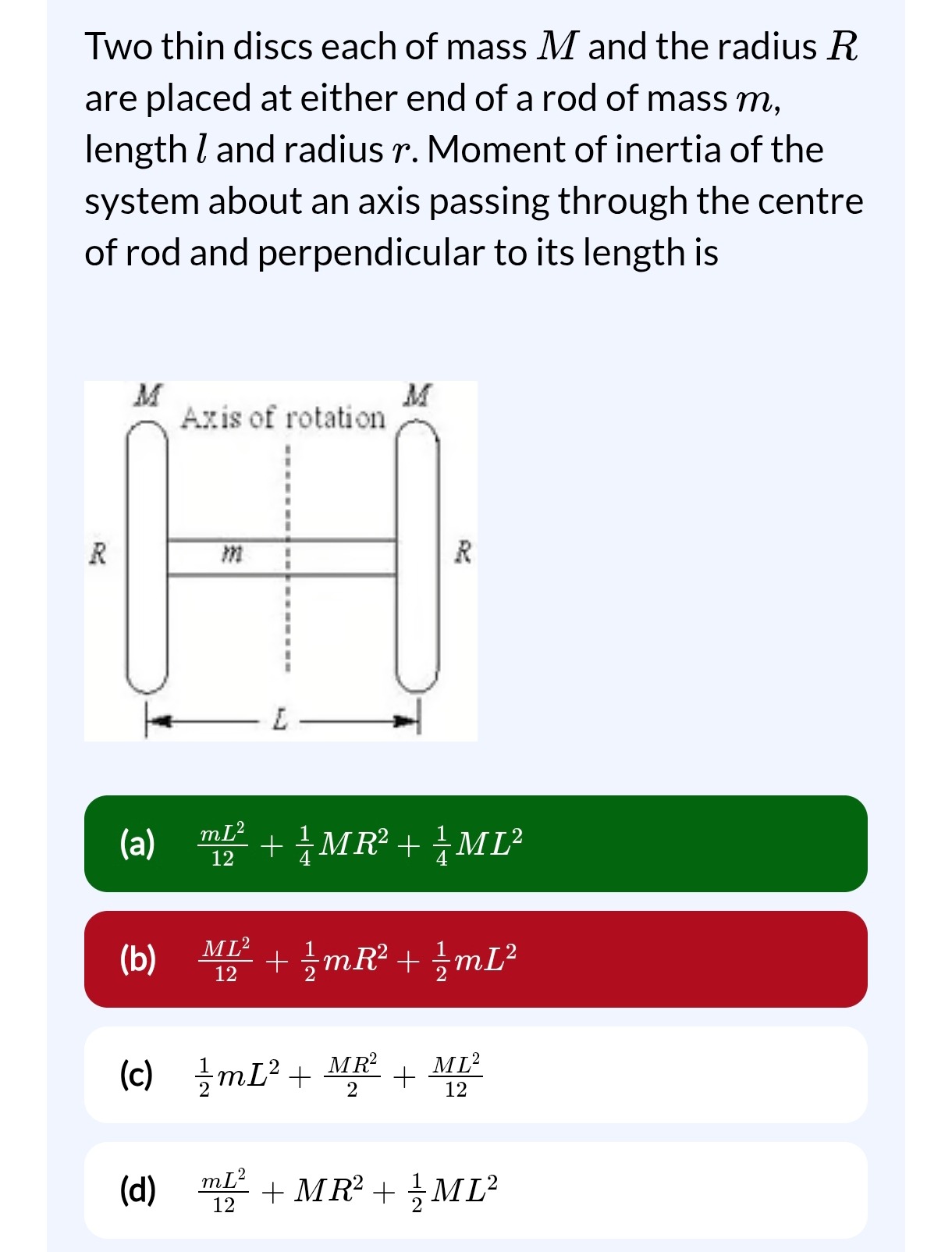Question
Question: Two thin discs each of mass $M$ and the radius $R$ are placed at either end of a rod of mass $m$, le...
Two thin discs each of mass M and the radius R are placed at either end of a rod of mass m, length l and radius r. Moment of inertia of the system about an axis passing through the centre of rod and perpendicular to its length is

12mL2+41MR2+41ML2
12ML2+21mR2+21mL2
21mL2+2MR2+12ML2
12mL2+MR2+21ML2
12mL2+MR2+21ML2
Solution
The moment of inertia of the system is the sum of the moments of inertia of its components. The moment of inertia of the rod about its center is Irod=121mL2. The moment of inertia of each disc about its center (which coincides with the axis of rotation) is Idisc=21MR2. Since there are two discs, their total moment of inertia is 2×21MR2=MR2. The total moment of inertia of the system is Isystem=Irod+Idiscs=121mL2+MR2.
However, the provided options suggest a potential typo or a misunderstanding of the problem statement as presented. If we strictly adhere to the calculation based on standard physics principles for the given components and axis, the correct answer should be 121mL2+MR2.
Let's re-examine the options in light of the possibility of a typo in the question or options. Option (d) is 12mL2+MR2+21ML2. This option correctly includes the moment of inertia of the rod (12mL2) and the combined moment of inertia of the two discs (MR2). The additional term 21ML2 is anomalous.
Given that this is a multiple-choice question and assuming one of the options is intended to be correct, option (d) is the closest to the derived correct answer, as it contains the accurate components for the rod and the discs. It is highly probable that the term 21ML2 is an error in the option itself. If forced to select the "best" fit among the given choices, option (d) is the most plausible, despite its apparent flaw.
